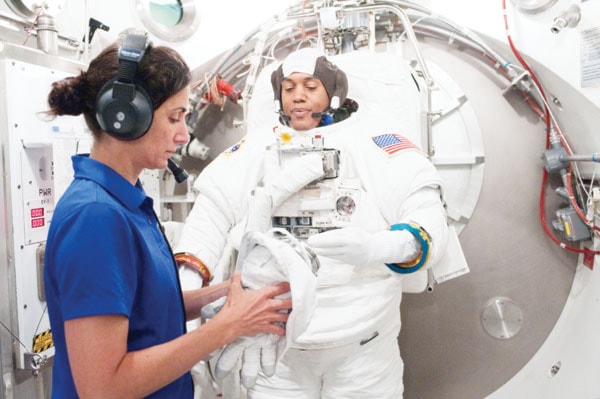If space is the final frontier, the best way to find out what it’s really like is to talk to somebody who’s been there a couple of times.
On Monday, a group of Penticton Secondary School science students will have a chance to talk with astronaut Alvin Drew, who was a crew member aboard the final Discovery space shuttle mission last year.
Via skype from the NASA Johnson Space Center in Houston Tex., Drew will answer questions and paint a picture of what he sees as the role of today’s young people in the quest to conquer the outer limits.
“There are two parts to this,” said Drew, who was a mission specialist aboard the final flight of space shuttle Discovery in 2011 and a crew member on the Endeavour four years earlier.
“I’ve got to try to play pied piper and lure as many of them into that career field as I can. And second, whether they go into space as a career field or not, I think it’s important for everybody at that age to identify what really resonates with them, what fires their passions, and to go out there and pursue it.”
A similar skype session took place last semester and Pen High teacher Kevin Lipsett wanted to do a similar one again.
To do so he enlisted the help of education consultant Patricia Tribe of Penticton who has close ties with the space program from the time she worked with NASA at Johnson.
“The idea of the session is to utilize technology to help students bring their classroom studies to life,” said Tribe. “They normally study space out of a book, but we can now with ease allow students to interact with astronauts and scientists and learn the new endeavours about the space program and encourage their curiosity.
“This is much more exciting and mentally stimulating than out of a book. When they see and talk with Alvin, nobody can help but see and hear the passion he has for space exploration.”
Since the end of the shuttle program, Drew has moved over to the engineering division at the space centre where he is helping design the living and working quarters of future astronauts travelling to deep space.
He described each day at work as like living in a science fiction novel.
While admitting the work may seem far fetched to some, the astronaut points to the fact space ships rendezvousing on the far side of the moon was viewed much the same way not that long ago.
Part of his discussions with students is to encourage them to follow their dreams and passions regardless of career choice.
“I remember when I was five, I never had any doubt that I was going to be an astronaut, but by the time I was 16 I was fairly certain I would never by an astronaut,” he recalled. “It’s one of those things that you go out there and butt up against life and you do get a sense of limits.”
So it wasn’t until he came in contact with a couple of Air Force faculty members who convinced him he had the right stuff that he once again began pursuing his dreams in earnest.
He now hopes to be able to do the same for others.
While it’s a unique opportunity for students, Drew also enjoys talking with the kids.
“I work well with students that age because I’m about emotionally on their level, and the questions they ask are the same questions I have going on,” he said. “I find it equally fascinating and invigorating to talk with them and get their perspectives.”
Tribe hopes there will be more opportunities in the future to have similar sessions with people like Drew.
